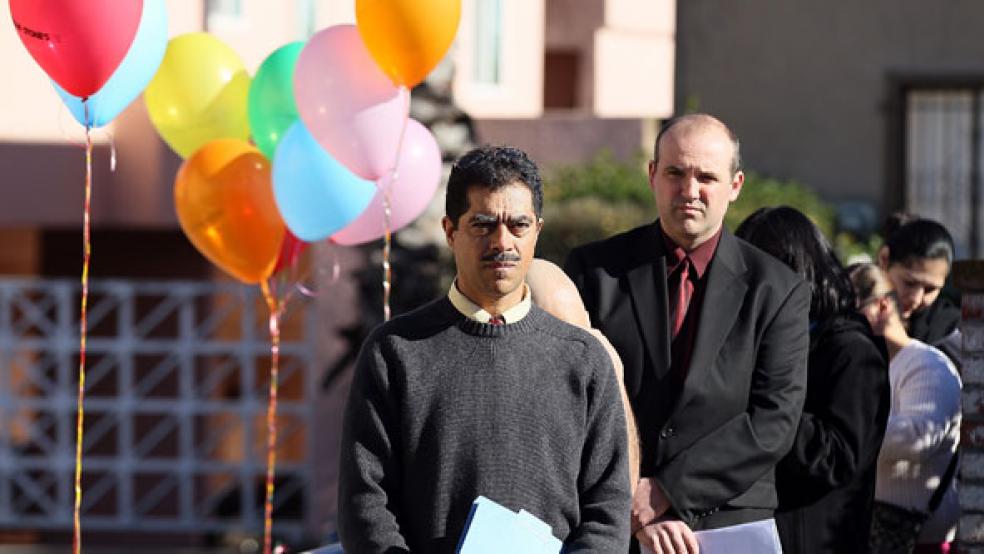One day after global markets took a nosedive and U.S. stocks plunged more than 500 points, investors breathed a temporary sigh of relief as employers added 117,000 jobs in July, while the unemployment rate dipped to 9.1 percent, according to the Labor Department on Friday morning.
On Wall Street, stocks initially surged on the better-than-expected report one day after the market's worst trading day since 2008. Friday’s jobs numbers “are critical to quell the turmoil in financial markets and shore up flagging confidence,” said Mark Zandi, chief economist at Moody’s Analytics. “The job gain and tick down in unemployment suggests that the economy will skirt recession.”
Also encouraging from July’s report is the upward revision in the job gains during the previous two months, which showed that hiring wasn’t as weak as first estimated. Net upward revisions to the previous two months added another 56,000 to employment. The economy added 53,000 jobs in May, up from an earlier estimate of 25,000, and 46,000 in June, up from 18,000. Still, June's total was the weakest in nine months.
Private-sector positions increased by 154,000 jobs, while the government sector shed 37,000 jobs, the ninth straight decline. Jobs increased in health care (31,000), retail (26,000) and manufacturing (24,000). Factory payrolls jumped by 24,000 in July after an 11,000 gain in the previous month. Construction employment rose by 8,000 workers, the biggest gain since February.
The jobless rate declined as 193,000 people left the labor force and the number of unemployed dropped by 156,000. The economy has created an average of 133,000 monthly jobs in 2011 compared with the 78,000 monthly average in 2010, an obvious improvement, notes Peter Boockvar, managing director and equity strategist at Miller Tabak + Co., an institutional trading firm. Still, it’s well below the 200,000 to 300,000 jobs needed each month to quickly improve the damage done during the financial crisis.
Not all economists are as bullish as Zandi. Earlier this week, Martin Feldstein, a Harvard University economics professor, told Bloomberg News there’s a 50 percent chance that the economy will slip into a double-dip recession. Since his remarks three days ago, there has been a string of bad news. “The odds of a new recession have clearly increased and I believe now are more than 50 percent,” he told The Fiscal Times.
The labor market remains weak. The unemployment rate has floated above 8 percent for 30 straight months, the longest stretch of joblessness since the Great Depression. The number of long-term unemployed (those jobless for 27 weeks and over) remained at 6.2 million and accounted for 44.4 percent of the 13.9 million Americans unemployed.
The U.S. economy is struggling and trying to weather the storm created by higher oil prices, fallout from the Japanese earthquake, and the hit to confidence from the debt ceiling debacle. The economy expanded at a meager 0.8 percent annual rate in the first six months of this year, the slowest pace since the recession officially ended, causing fears that the economy could fall back into a recession only two years after it was officially over.
“The bigger picture is that two years after the recession ended the labor market has not really recovered at all, and may even have gone backwards,” said Paul Dales, economist with Capital Economics. “Even though immediate recession fears may fade a little on the back of this report, the key point is that the economy is still struggling and will continue to do so next year.”




